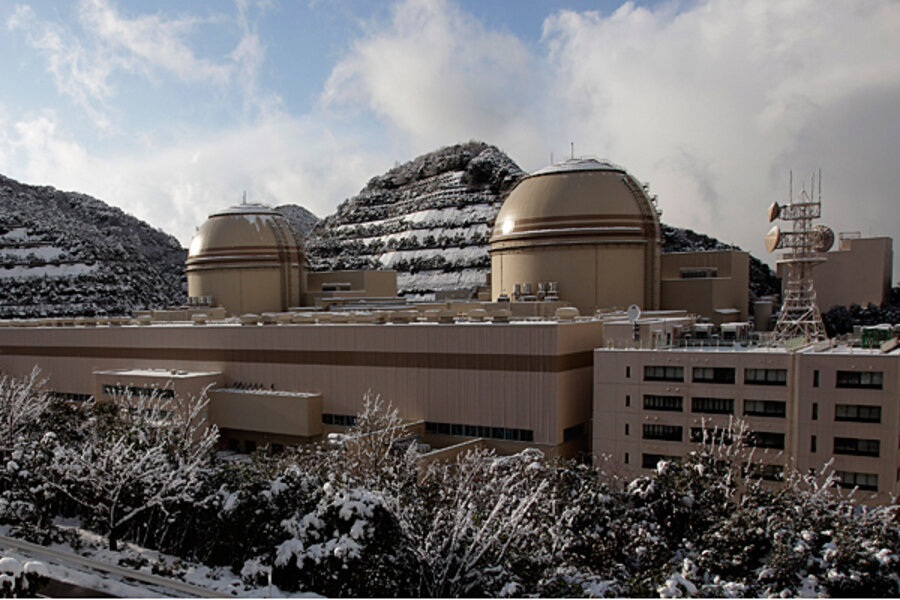Experts cast doubt on Japan nuclear power plant stress tests
Loading...
| Tokyo
Advisers to Japan's nuclear safety agency have condemned stress tests being conducted at nuclear power plants around the country as the government seeks international support for the early resumption of dozens of idle reactors.
The government ordered tests on all of Japan's reactors after the March 11, 2011, accident at the Fukushima Daiichi nuclear power plant cast doubt on the safety of nuclear power in a country prone to earthquakes and tsunami.
A team of experts from the International Atomic Energy Agency (IAEA) began a review of the safety tests this week. Although the inspectors say their role is not to offer advice, moves to get reactors back online will be boosted by a positive appraisal of the tests in the IAEA report, due at the end of the month.
But two nuclear experts said the stress tests being conducted at Ohi and elsewhere were deeply flawed and raised concern that the Japanese government was pushing for a return to nuclear power too soon.
"It is a misunderstanding to believe these tests prove that a nuclear plant is safe," says Masashi Goto, a former nuclear power plant designer.
Currently only three of Japan's 54 reactors are in operation, 10 months after the Fukushima accident forced the closure of active reactors for safety checks. The latest closure came on Friday, when a reactor at a plant near the Japan Sea was shut down to undergo regular inspections.
The government is pushing for the early restart of idled reactors to ward off a possible power shortage during the long, humid summer.
The trade and industry minister, Yukio Edano, said on Friday he believed Japan would be able to cope without imposing power cuts even if all 54 reactors were offline by the summer, a popular move for the public.
Mr. Edano said in an interview with the newspaper Asahi Shimbun that any energy-saving measures would not affect industry. "Last year, the automobile industry changed its days off and workers were asked to put up with the inconvenience," he said. "We cannot allow the same thing to happen this year. There is still room for society as a whole to conserve electricity."
After the Fukushima disaster Japan abandoned plans to generate more than half of its electricity supply through nuclear power by 2030, but the prime minister, Yoshihiko Noda, has said the country needs to retain some nuclear plants until alternative sources of energy are developed.
Attention is now focused on a plant in the town of Ohi in western Japan, which could be the first to resume operations since the Fukushima disaster.
Its operator, Kansai Electric Power, has said that two of the facility's reactors are able to withstand quakes and tsunami much stronger than predicted for the area, a view reportedly endorsed by the country's nuclear and industrial safety agency.
But Mr. Goto, and others have found fault with the pace and the method of the inspections
"The reality is that the inspectors only look at the reactors' design and then factor in possible problems such as earthquakes and tsunami of a certain size,” he says. “They do not take into account the various malfunctions that can result in a disaster, including human error and equipment failure.”
Hiromitsu Ino, an emeritus professor at Tokyo University and fellow member of the nuclear safety agency advisory panel, said the tests should not have been introduced until all the facts of the Fukushima disaster were known.
"The tests are being presented as a comprehensive survey of the safety of Japan's nuclear power plants, but the reality is very different," Mr. Ino says. "They only look at potential problems in isolation, and the process of testing is exactly the same as it was before the March earthquake."
Ino and Goto say they are the only two dissenters on the advisory panel, which includes experts who conduct research funded in part by the nuclear power industry.
"Japan's 'nuclear village' is so strong that collusion is allowed to flourish," Ino said. "Professors who conduct research and promote the nuclear industry are also acting as advisers to the nuclear safety agency. There is no independence."
Goto and Ino said it would be impossible to appraise the causes and consequences of the Fukushima disaster unless the plant's operator, Tokyo Electric Power (TEPCO), releases all of the relevant data that would then be used to perform a simulation, which it has been notably reticent to do.
Ino says he had little confidence in the IAEA team, which is slated to present its latest report at the end of the month.
"The last time the IAEA inspectors came to Japan they simply inspected sites and documents and left saying everything was fine. They submitted a flimsy report and I fear the same will be the case this time."





